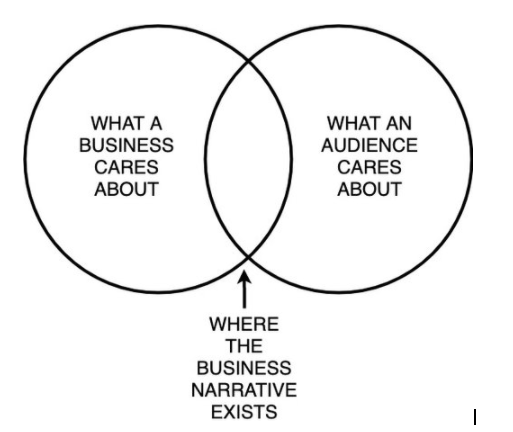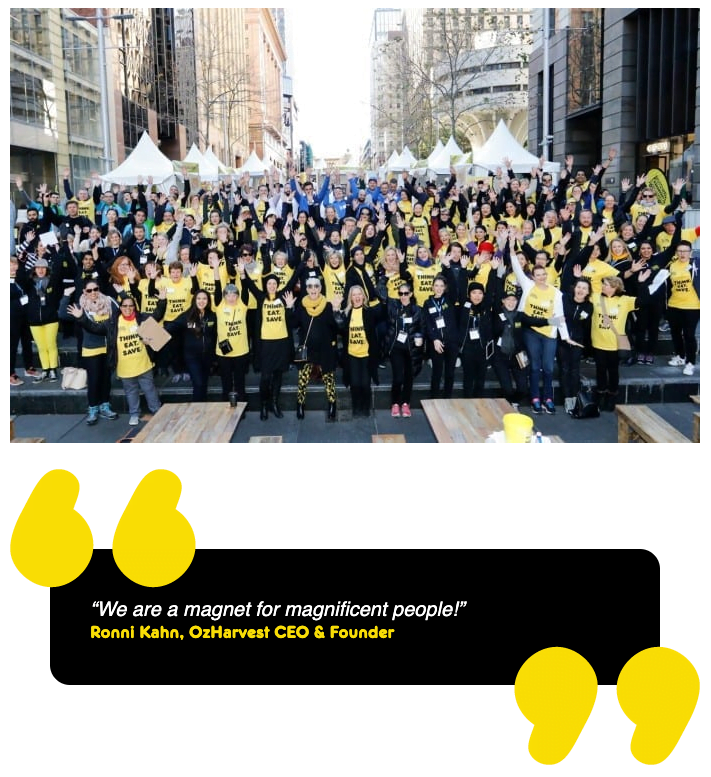Telling a powerful business story requires more than a business plan and a fancy logo – it’s finding the right hook, themes or ideas to inspire commitment and take people on a ride to buy and advocate for the business, without feeling like they are being sold to.
Every business from global giants to the local dog walker has a business narrative. Yet most businesses never take the time to properly define their story, instead allowing their marketing and brand campaigns for products and services define it for them or waiting until they have to write the “About Us” page on their website.
A great business narrative leaves people convinced that a business is valuable, even if they aren’t your ideal customer. It can persuade stakeholders like investors – or influencers like the mainstream media – that this is a business that’s unique with a powerful offer. It forges an emotional connection that can set you apart from your competitors.
Uncovering the right business narrative
A business narrative is the anchor or guiding star to underpin communications, marketing and storytelling. It has a clear purpose at its centre – you’re not trying to sell what you do so much as why you do it. Then you want to wrap that ‘why’ up in a compelling narrative that demonstrates the meaning you deliver to customers, staff, investors, clients and, yes, even the world.
Purpose – or the ‘why’ behind a business – can be the toughest thing to articulate but also the most powerful, especially when it comes to making money. As Simon Sinek says: “People don’t buy what you do; they buy why you do it. And what you do simply proves what you believe.”
An EY survey found around 58% of businesses who prioritized purpose and embedded it into their organisation grew revenues by 10% or more, compared to the 42% of laggards who didn’t bother with purpose and found revenue declined. Purpose is usually what’s at the heart of a great business narrative.
Purpose is also something that can be hard to ‘find’ and may take practice to articulate. In my experience, most businesses have a vague idea of their purpose and different staff members will articulate it in different ways – it usually takes a facilitator or someone external to a business to help best express what it can be.
If purpose is the main ingredient of your business narrative than the transformational outcomes your business achieves for your key audiences, markets or customers should be the secondary ingredient. What is the pain point your business resolves? What are the changes in your customer’s lives, the pain you make go away or the goals you help them reach?
The narrative must establish credibility and connect with your audience
So many bad business narratives are informed by what a business wants to say rather than what its audience wishes to hear. But here’s a secret: your audience doesn’t care about your business message, they care about a narrative they can engage with.
Find out what your priority commercial audiences – these are the people that need to support your business to make it work – actually care about and use those insights to craft a compelling =business narrative.
Our brain’s are addicted to stories and wired to want to find out more about what we’re interested in. It’s basic neuroscience. Ever since Homer and his gang of Greek storytellers invented drama, the human brain wants to know more about interesting stories.

Plenty of interesting businesses create compelling narratives to base their founder stories, their competitor stories or their service stories on. Some examples include:
Oz Harvest
This for-purpose business consistently tells a great story with their eye-catching black and yellow colours that catch my eye as I drive the streets and see their transport vans at work or in my social media feed.
You can clearly see why Oz Harvest founder Ronni Kahn created her food waste rescue charity on this page of their website. Their purpose is to nourish our country by rescuing food that would otherwise go to waste and she speaks easily to how this purpose excites her and energises her.

H3: Cotton On
The retail group – which owns brands like Typo and Rubi – has the defined purpose “to make a positive difference to people’s lives”. Notice how that has nothing to do with selling cheap clothes? The best part of the Cotton On narrative is their historic founder story, which speaks to the meaning behind the business name “cotton on”, which means to cotton on to an idea that’s bigger than simply selling cotton clothing.

Make the narrative yours – don’t borrow from others
Every business’s story is unique. Or it should be. The most critical piece of the business narrative is creating something relevant, truthful and authentic. Did you hear that? Authentic. I’ll say it one more time. Authentic. Meaningful. Real.
Don’t try to use smoke and mirrors to “sell” what your business is not – you’ll notice that KFC doesn’t profess to sell healthy food, but makes us understand the lure of its well-priced fried snacks. 7-Eleven don’t profess to sell gourmet coffee, they sell us convenience and affordability and offer tactical promotions like ‘free coffee if you bring your own cup’.
Trying to force a business offer, service or promotion as the anchor of the business narrative rarely works. Your business story needs to encapsulate where you’ve been, where you are today and where you’re going tomorrow.
A good business narrative explains what your business does in the wider context of the world, the industry and the benefit for customers or stakeholders.

